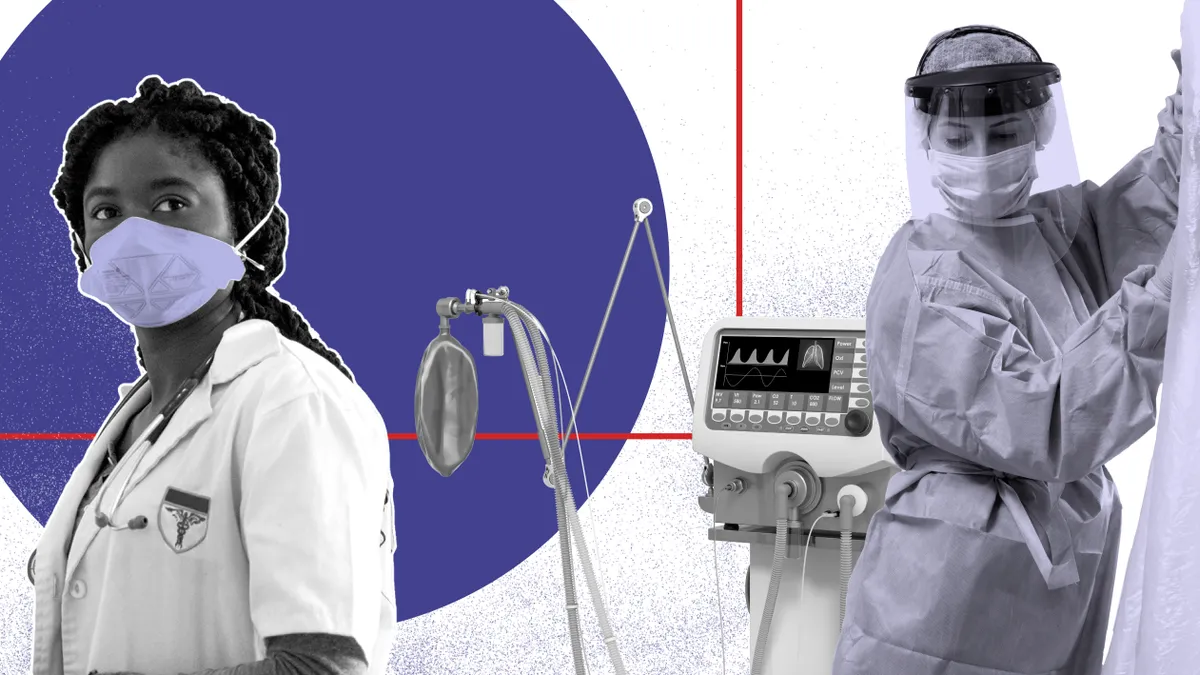Dive Brief:
- HHS is amending a guidance change it made in September that received industry pushback for jeopardizing whether some hospitals could keep and use some of the nearly $175 billion in relief funds meant to buoy providers amid the COVID-19 pandemic.
- Hospitals had warned the formula change could result in devastating effects for providers and that many would have to ultimately return the funds that were meant to prop them up.
- In a statement released Wednesday, HHS said it amended its approach after hearing concerns from many in the provider community and Congress. The American Hospital Association applauded HHS' change. "From our initial reading, this change appears to address many of our concerns. We appreciate HHS's consideration of the issue and look forward to reviewing the document in more detail," Tom Nickels, AHA executive vice president, said.
Dive Insight:
The issue is wonky, but extremely consequential for hospitals and health systems across the country, especially since billions in provider relief funds have already been delivered to their bank accounts.
As customers for the medtech industry, those funds to providers have an important domino effect for device makers. AdvaMed Chairman Kevin Lobo, who serves as CEO at Stryker, praised the "very meaningful" impact of CARES money at the trade group's virtual conference earlier this month, noting it in some cases likely helped avoid bankruptcies. "Without the stimulus funding, this would be a very different picture for our business," Lobo said. Similarly, BD CEO Tom Polen called the benefit to the healthcare ecosystem a "positive surprise."
Even though HHS is walking back its instructions from September, it's not a complete reversal to its initial guidance in June.
"My read is this is going to be welcomed but it's still going to put some folks in a difficult spot," Tim Fry, an attorney with McGuireWoods, said.
In this latest change, HHS wants to compare hospital revenue from all of 2019 to 2020 — a full year-over-year look. If hospitals posted a dip in revenue, they likely can keep the funds. But if they ultimately post higher revenue compared to the year prior, those funds are at risk, Fry said.
This may penalize hospitals that expanded their reach in some way in late 2019 and going into 2020. Of course, the revenue might be bigger because they bought a new hospital, but it's still lower than what they had projected for 2019.
Because the guidance seeks to look at year-over-year, and not month-to-month, a hospital may be able to recover the revenue it lost in the depths of the downturn in March and April.
In its latest iteration, HHS said it's measuring lost revenue "as a negative change in year-over-year actual revenue from patient care related sources."
In June, HHS said providers could take a year lookback or define lost revenue as what they had budgeted or expected to come in during 2020.
HHS in its statement on Thursday did confirm that the thrust behind that September change was a concern about the relief funds being too generous for some providers.
The department said it was seeking to "restrict some providers from receiving distributions that would make them more profitable than they were before the pandemic."
Soon, hospitals will have to report how they spent the money. In exchange for taking relief funds, providers have to adhere to certain reporting requirements and will ultimately have to show they're in compliance.
The Coronavirus Aid, Relief, and Economic Security Act says providers can use the grants on "health care related expenses or lost revenues that are attributable to coronavirus."
HHS tried to iron out a clearer way to define lost revenue. Initially, in June, HHS said that lost revenue could be measured by calculating the difference between the previously budgeted revenue for March and April and the actual revenue recorded during those dismal months. Or, HHS said, providers could calculate lost revenues by comparing revenues to the same period last year.
But then in September, HHS threw a curve ball to the provider community in changing up that definition around lost revenue, drawing ire from the industry.
HHS said in a notice on Sept. 19 that it wanted lost revenue "represented as a negative change in year-over-year net patient care operating income." That immediately drew confusion due to the fact that revenue is obviously not operating income.












